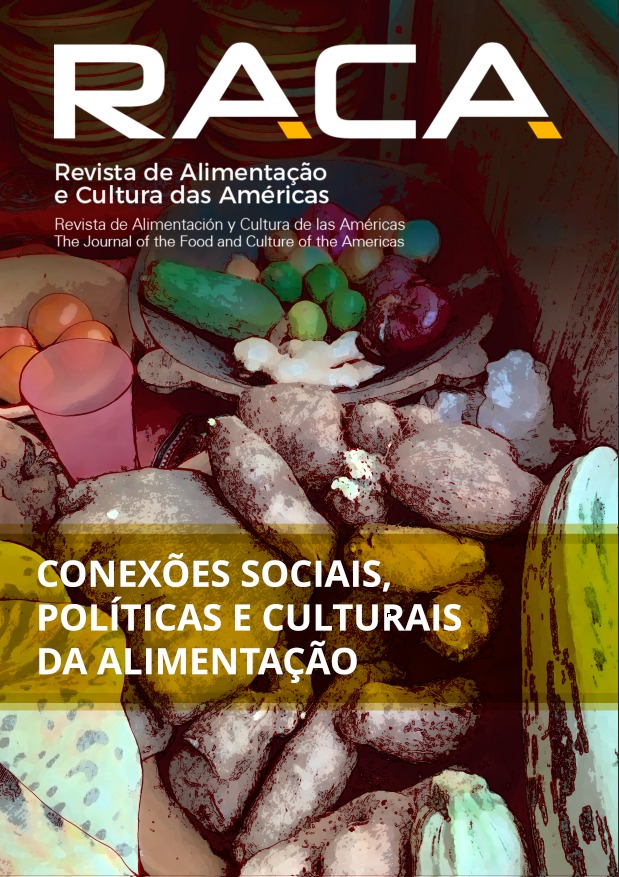Food and nutritional (IN)Security and its associations with sociodemographic conditions in the Gilson Coelho residential area in Bom Jesus-PI during the Covid-19 pandemic
DOI:
https://doi.org/10.35953/raca.v5i1.191Keywords:
Income, COVID-19, Food Security, Public PoliciesAbstract
Social isolation was the UN's main recommendation to prevent the COVID-19 respiratory infection, causing serious impacts in the Northeast region of Brazil, such as the closure of businesses, an increase in unemployment and a drop in family income. To minimize the economic effects, the federal government implemented emergency aid, but this was not enough to combat poverty and inequalities during the pandemic. The study carried out at Residencial Gilson Coelho, in Bom Jesus-PI, during the pandemic, analyzed food insecurity and its relationship with sociodemographic characteristics and participation in government income transfer programs. The results showed that 88.7% of family heads were women, 82.9% were black or mixed race and 44.9% had low levels of education. Furthermore, 27% have a family income of less than R$550. Still, 85% of the population lives with some level of food insecurity, with 17.2% of households facing severe food insecurity. The pandemic highlighted the need for effective and agile public policies to tackle the disease, especially in vulnerable groups. Poverty reduction must be approached in a multidimensional way and with measures adapted to the reality of each audience.
References
Panigassi et al. Insegurança alimentar como indicador de iniqüidade: Análise de inquérito populacional. Cad Saude Publica. 2008;24(10):2376–84.
Costa et al. Insegurança alimentar em agricultores: violação do direito humano à alimentação adequada. Cad Saúde Coletiva. 2021;29(1):122–32.
Corrêa AMS. Insegurança alimentar medida a partir da percepção das pessoas. Estud Avancados. 2007;21(60):143–54.
Martins APB. Impacto do Programa Bolsa Família sobre a aquisição de alimentos em famílias brasileiras de baixa renda. 2013;123.
Cardoso BB. A implementação do Auxílio Emergencial como medida excepcional de proteção social. Rev Adm Pública. 2020;54(4):1052–63.
Instituto Brasileiro de Geografia e Estatística. Pesquisa de Orçamentos Familiares 2017-2018: análise da segurança alimentar no Brasil. Pesquisa de orçamentos familiares 2017-2018: análise da segurança alimentar no Brasil. 2020.
Pérez-Escamilla R, Segall-Corrêa AM. Food insecurity measurement and indicators. Rev Nutr. 2008;21(SUPPL.):15–26.
Rede PENSSAN. Insegurança Alimentar e Covid-19 no Brasil. Suplemento I: Insegurança Alimentar nos estados 2022. 65 p. Available at: https://agroecologia.org.br/2022/09/14/inseguranca-alimentar-nos-estados-suplemento-i-rede-penssan/
SARDINHA, L. M. V. Escala Brasileira de Insegurança Alimentar – EBIA: análise psicométrica de uma dimensão da Segurança Alimentar e Nutricional Estudo Técnico No 01/2014, Brasília, 2014. Disponível em: <https://fpabramo.org.br/acervosocial/estante/escala-brasileira-de-inseguranca-alimentar-ebia-analise-psicometrica-de-uma-dimensao-da-seguranca-alimentar-e-nutricional/>. Acesso em: 01 Jul 2024.
Zulaikha S. No 主観的健康感を中心とした在宅高齢者における 健康関連指標に関する共分散構造分析Title. Rev Bras Ergon. 2016;9(2):10. Available at: https://www.infodesign.org.br/infodesign/article/view/355%0Ahttp://www.abergo.org.br/revista/index.php/ae/article/view/731%0Ahttp://www.abergo.org.br/revista/index.php/ae/article/view/269%0Ahttp://www.abergo.org.br/revista/index.php/ae/article/view/106
Natalino M, Pinheiro MB. Proteção social aos mais vulneráveis em contexto de pandemia: algumas limitações práticas de auxílio emergencial e a adequação dos benefícios eventuais como instrumento complementar de política socioassistencial TT - Nota Técnica n. 67 (Disoc): Proteção. Nota Técnica / IPEA Disoc. 2020;67:16. Available at: http://repositorio.ipea.gov.br/bitstream/11058/9987/1/NT_19_Dinte_Covid_19 e medidas legais.pdf%0Ahttp://repositorio.ipea.gov.br/bitstream/11058/9999/1/NT_67_Disoc_Protecao Social aos Mais Vulneraveis em Contexto de Pandemia.pdf
Downloads
Published
How to Cite
Issue
Section
License
Copyright (c) 2024 The Journal of Food and Culture of the Americas

This work is licensed under a Creative Commons Attribution 4.0 International License.






